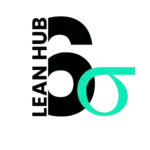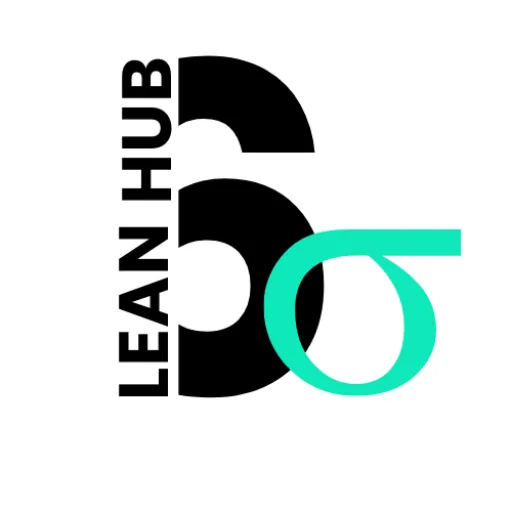Shine: Clean and Inspect Your Workspace
In our daily lives, the environment in which we work plays a crucial role in shaping our productivity and overall well-being.
A clean and inspected workspace is not merely a matter of aesthetics; it significantly influences our mental clarity, focus, and efficiency.
When we step into a tidy and organized area, we often feel more motivated and ready to tackle the tasks at hand.
Conversely, a cluttered and chaotic workspace can lead to distractions, stress, and even a decline in our performance. By prioritizing cleanliness and regular inspections, we create an atmosphere that fosters creativity and enhances our ability to concentrate. Moreover, maintaining a clean workspace is essential for health and safety.
Dust, allergens, and clutter can contribute to various health issues, including respiratory problems and increased stress levels. Regular inspections help us identify potential hazards, such as spills or faulty equipment, that could pose risks to our safety. By ensuring that our workspace is not only clean but also regularly inspected, we take proactive steps to protect ourselves and our colleagues from accidents and illnesses.
This commitment to cleanliness and safety ultimately cultivates a culture of responsibility and care within our work environment.
Key Takeaways
- A clean and inspected workspace is important for productivity, safety, and overall well-being of employees.
- Steps to clean and inspect your workspace include decluttering, dusting, sanitizing, and organizing.
- Tools and supplies needed for cleaning and inspecting include cleaning solutions, microfiber cloths, gloves, and a checklist for inspection.
- Safety precautions to take while cleaning and inspecting include wearing protective gear, using caution around electrical outlets, and properly storing cleaning supplies.
- Benefits of a clean and inspected workspace include improved morale, reduced risk of accidents, and increased efficiency.
- Common mistakes to avoid when cleaning and inspecting include neglecting hard-to-reach areas, using improper cleaning solutions, and skipping regular inspections.
- Tips for maintaining a clean and inspected workspace include setting a cleaning schedule, involving employees in the process, and addressing issues promptly.
- The impact of a clean and inspected workspace on productivity is significant, leading to a healthier and more efficient work environment.
Steps to Clean and Inspect Your Workspace
To achieve a clean and inspected workspace, we must follow a systematic approach that encompasses both cleaning and inspection processes. The first step involves decluttering our area. We should take the time to remove unnecessary items, papers, and equipment that no longer serve a purpose.
This process not only clears physical space but also helps us mentally prioritize what truly matters in our work. Once we have decluttered, we can move on to dusting surfaces, wiping down equipment, and organizing essential tools in a manner that promotes efficiency. After the cleaning phase, we must shift our focus to inspection.
This involves examining our workspace for any potential hazards or maintenance issues. We should check for loose wires, malfunctioning equipment, or any signs of wear and tear that could compromise safety. Additionally, we can assess the ergonomics of our workspace to ensure that our setup promotes comfort and reduces the risk of strain or injury.
By taking these steps, we not only create a clean environment but also ensure that it is safe and conducive to productivity.
Tools and Supplies Needed for Cleaning and Inspecting
Equipping ourselves with the right tools and supplies is essential for effective cleaning and inspection of our workspace. Basic cleaning supplies such as microfiber cloths, disinfectant wipes, and all-purpose cleaners are fundamental for maintaining cleanliness. These items allow us to tackle dust, grime, and germs on various surfaces efficiently.
Additionally, having a vacuum cleaner or broom on hand helps us manage debris on the floor, ensuring that our workspace remains tidy. For the inspection phase, we may need specific tools depending on the nature of our work environment. A checklist can be invaluable for systematically assessing potential hazards or maintenance needs.
If we work with machinery or technology, having basic tools like screwdrivers or pliers can help us address minor repairs on the spot. Furthermore, personal protective equipment (PPE) such as gloves or masks may be necessary when dealing with cleaning agents or hazardous materials. By gathering these tools and supplies beforehand, we set ourselves up for success in both cleaning and inspecting our workspace.
Safety Precautions to Take While Cleaning and Inspecting
| Safety Precautions | Description |
|---|---|
| Wear Personal Protective Equipment (PPE) | Wear gloves, goggles, and masks to protect against chemicals and airborne particles. |
| Proper Ventilation | Ensure good airflow by opening windows or using exhaust fans to prevent inhalation of fumes. |
| Read Labels and Instructions | Follow manufacturer’s guidelines and warnings on cleaning products and equipment. |
| Use Ladders Safely | Ensure ladders are stable and use proper climbing techniques to avoid falls. |
| Store Chemicals Properly | Keep cleaning products in their original containers and away from children and pets. |
As we embark on the journey of cleaning and inspecting our workspace, it is vital to prioritize safety at every step. One of the first precautions we should take is to read labels on cleaning products carefully. Many cleaning agents contain chemicals that can be harmful if inhaled or come into contact with skin.
By understanding the proper usage of these products, we can protect ourselves from potential health risks. Additionally, wearing appropriate personal protective equipment (PPE) is crucial during the cleaning process. Gloves can shield our hands from harsh chemicals, while masks can help us avoid inhaling dust or fumes.
If we are working in an area with heavy equipment or machinery, ensuring that we are wearing closed-toe shoes and other protective gear is essential for preventing injuries. By taking these safety precautions seriously, we create a safer environment not only for ourselves but also for our colleagues who share the workspace.
Benefits of a Clean and Inspected Workspace
The advantages of maintaining a clean and inspected workspace extend far beyond mere aesthetics; they encompass various aspects of our professional lives. One significant benefit is enhanced productivity. When we work in an organized environment free from distractions, we can focus better on our tasks.
Studies have shown that individuals who maintain clean workspaces tend to complete tasks more efficiently than those who operate in cluttered settings. Furthermore, a clean workspace contributes to improved morale among team members. When everyone takes pride in their environment, it fosters a sense of ownership and responsibility within the team.
This positive atmosphere can lead to increased collaboration and communication among colleagues, ultimately enhancing overall team performance. Additionally, clients or visitors who enter a well-maintained workspace are likely to form favorable impressions of our professionalism and attention to detail.
Common Mistakes to Avoid When Cleaning and Inspecting
Avoiding Neglected Areas
While cleaning and inspecting may seem straightforward, there are common pitfalls that we should be mindful of to ensure effectiveness. One frequent mistake is neglecting certain areas during the cleaning process.
It’s easy to overlook corners, behind furniture, or high shelves where dust accumulates over time.
Thorough Inspection is Key
By adopting a thorough approach and paying attention to these often-ignored spots, we can achieve a truly clean environment. Another mistake is rushing through the inspection phase without taking the time to assess potential hazards adequately. We might be tempted to skip checking equipment or overlook minor issues that could escalate into significant problems later on.
Maintaining a Safe Workspace
By dedicating sufficient time to both cleaning and inspecting, we can prevent future complications and maintain a safe workspace for ourselves and others.
Tips for Maintaining a Clean and Inspected Workspace
Once we have established a clean and inspected workspace, it is essential to implement strategies for maintaining this standard over time. One effective tip is to create a regular cleaning schedule that outlines specific tasks to be completed daily, weekly, or monthly. By setting aside dedicated time for cleaning activities, we can ensure that our workspace remains organized and free from clutter.
Additionally, encouraging team members to take responsibility for their own areas can foster a culture of cleanliness within the workplace. We can implement simple practices such as “clean as you go” policies or designate specific days for team-wide cleaning efforts. By working together towards a common goal of maintaining cleanliness, we not only enhance our individual workspaces but also contribute to a more positive overall environment.
The Impact of a Clean and Inspected Workspace on Productivity
In conclusion, the significance of maintaining a clean and inspected workspace cannot be overstated. The benefits extend beyond mere aesthetics; they encompass improved productivity, enhanced morale among team members, and increased safety within the work environment. By following systematic steps for cleaning and inspection while utilizing appropriate tools and safety precautions, we create an atmosphere conducive to success.
As we strive for excellence in our professional lives, let us remember that a clean workspace is not just about tidiness; it reflects our commitment to quality and care in everything we do. By prioritizing cleanliness and regular inspections, we set ourselves up for greater achievements while fostering a culture of responsibility within our teams. Ultimately, the impact of a clean and inspected workspace resonates throughout our work lives—enhancing productivity while promoting well-being for all who share the space with us.
FAQs
What is the purpose of cleaning and inspecting the workspace?
Cleaning and inspecting the workspace helps to maintain a safe and organized environment, reduces the risk of accidents, and ensures that equipment and tools are in good working condition.
How often should the workspace be cleaned and inspected?
The frequency of cleaning and inspecting the workspace will depend on the type of work being done and the specific requirements of the workplace. However, it is generally recommended to clean and inspect the workspace on a regular basis, such as daily, weekly, or monthly.
What are some common tasks involved in cleaning and inspecting the workspace?
Common tasks include removing clutter, wiping down surfaces, sweeping or vacuuming floors, checking for any damaged equipment or tools, and ensuring that safety measures are in place.
Who is responsible for cleaning and inspecting the workspace?
The responsibility for cleaning and inspecting the workspace may vary depending on the workplace. In some cases, it may be the responsibility of individual employees to keep their own work areas clean and organized. In other cases, there may be designated cleaning and maintenance staff who are responsible for these tasks.
What are the benefits of maintaining a clean and inspected workspace?
Maintaining a clean and inspected workspace can lead to improved productivity, reduced risk of accidents and injuries, and a more professional and organized work environment. It can also help to prolong the lifespan of equipment and tools.






